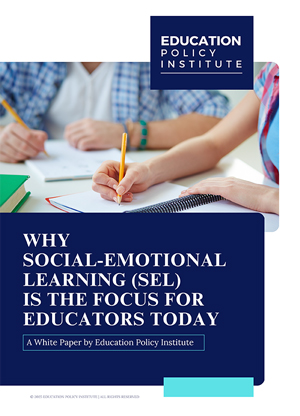In today’s digital era, the education sector is undergoing profound transformation, driven significantly by the integration of data analytics. Once mainly used in industries like finance and marketing, data analytics has now become a powerful tool in modern classrooms and educational institutions. From creating learning paths to enhancing administrative planning, data insights are reshaping the way education is delivered, managed, and experienced.
Customizing Learning Through Data Analytics in Education
One of the most notable impacts of data analytics in education is its ability to personalize learning. In the past, teaching was mostly uniform—every student received the same instruction regardless of individual learning needs. Now, through digital platforms and data collection tools, institutions can track student engagement, performance, and preferences in real time.
By analyzing assessment scores, participation trends, and interaction patterns, educators can identify where each learner stands. This makes it possible to design targeted interventions and adjust the pace of instruction. For instance, learners who struggle with certain concepts can be given extra resources or more time, while those who excel can move on to more advanced material. This approach builds a more inclusive and responsive learning environment, boosting both performance and interest.
With students receiving content made to their learning style and speed, the sense of autonomy and motivation increases, ultimately encouraging better academic outcomes and deeper engagement.
Equipping Teachers with Actionable Insights via Data Analytics in Education
Teachers, too, benefit from the insights that analytics provide. Rather than relying on periodic exams or intuition, educators now have continuous access to data that highlights how students are interacting with the material. This allows them to quickly identify which topics are well-understood and which ones need reinforcement.
Educators can also detect early signs of disengagement or difficulty, enabling timely support. Analytics dashboards and tools offer a snapshot of classroom trends, allowing teachers to adapt lesson plans or change teaching strategies as needed. Instructors can focus their attention more efficiently, spending more time with students who need extra help.
Furthermore, feedback from analytics can help educators grow professionally. By reflecting on classroom data, teachers can evaluate the effectiveness of their methods and make evidence-based improvements.
Promoting Student Success and Reducing Dropout Rates Using Data Analytics in Education
A persistent challenge in education is the issue of students dropping out or failing to meet their academic goals. Data analytics can play a preventive role here by recognizing warning signs before problems escalate. By examining multiple data points—academic scores, attendance records, and behavioral indicators—schools can pinpoint which students may be at risk.
Once identified, support systems can be activated promptly. Counseling, peer mentoring, academic help, or even a change in workload can be offered to ensure students don’t fall behind. Analytics also enable institutions to measure the success of these interventions and make adjustments accordingly.
Additionally, by analyzing students’ interests, academic strengths, and employment trends, institutions can guide learners toward educational paths and career choices that are more aligned with their goals and job market opportunities. This approach not only enhances success after graduation but also reinforces student confidence during their studies.
Improving Institutional Operations with Data Analytics in Education
Outside the classroom, data analytics is helping educational institutions function more efficiently. Administrative departments now use data to enhance planning, budgeting, and resource allocation. For example, analyzing enrollment data can help anticipate course demand, allowing for better scheduling and staff assignments.
Data also supports decisions about campus facilities. Patterns in library use or lab occupancy can inform how space is managed, ensuring optimal availability and comfort. Financial departments, too, benefit by tracking tuition payment trends, identifying funding gaps, and ensuring that budgets are spent on impactful programs.
Ultimately, when administrators have access to reliable and timely data, they can respond to emerging issues faster, make better long-term plans, and deliver a smoother experience for students and staff alike.
Guiding Leadership and Long-Term Strategy Through Data Analytics in Education
Strategic planning in education has traditionally been based on assumptions or outdated statistics. Today, analytics empower decision-makers to rely on real-time data when shaping institutional goals and policies. With access to large volumes of information—ranging from academic results to student satisfaction—leaders can gain a clearer understanding of the challenges and opportunities their institutions face.
These insights enable the development of more effective programs, such as expanding virtual learning or redesigning curricula to meet current needs. Leadership teams can also track the outcomes of new initiatives, helping them decide whether to scale, modify, or discontinue them.
Moreover, many regulatory bodies require transparent and detailed reporting. Institutions that effectively use analytics are better positioned to meet such compliance standards, ensuring accountability and credibility.
Building a Culture of Reflection and Growth with Data Analytics in Education
When data becomes part of everyday decision-making, it creates a culture of ongoing improvement. Instead of waiting for the end of a semester to assess performance, educators, administrators, and students receive continuous feedback that supports growth.
Teachers can update their teaching materials regularly based on student progress, administrators can refine services based on real-time usage patterns, and students can monitor their own learning journey. This loop of constant reflection encourages experimentation and adaptability—critical traits in an ever-changing educational landscape.
Such a mindset helps institutions remain agile, embrace innovation, and maintain high standards of academic delivery.
Addressing Ethical and Practical Concerns in the Use of Data Analytics in Education
Despite its many benefits, the use of data analytics in education is not without risks. One key concern is student privacy. Handling personal and academic data responsibly is essential. Clear policies must be in place to protect sensitive information and ensure ethical use.
There’s also the risk of algorithmic bias. If the data used to build predictive models is unbalanced or incomplete, it may reinforce existing inequalities. For instance, students from underrepresented backgrounds might be unfairly flagged as underperformers. To prevent this, institutions must prioritize fairness and inclusivity when designing data systems.
Another challenge is ensuring the accuracy and quality of data. Poor data can lead to misleading conclusions. Institutions must invest in robust data management practices and ensure that staff are trained to interpret and use data effectively.
Looking Toward the Future
The future of education will be increasingly influenced by advanced technologies that build on the foundation of data analytics. Real-time learning feedback, intelligent tutoring systems, and AI-driven personalization will become more prevalent. These tools promise to make learning more engaging and efficient while giving educators deeper insights into student needs.
To fully embrace this future, institutions need more than just tools—they need a data-literate community. Teachers, students, and administrators must be trained to interpret and act on insights effectively. Building such skills will be key to unlocking the full potential of data in education.
By integrating analytics into every level of education—from curriculum development to student support—institutions are paving the way for a smarter, more responsive, and inclusive learning ecosystem.
Conclusion
Today, with so much information and constant change, being able to make smart and timely decisions is key to improving education. Data analytics offers a powerful lens through which institutions can better understand the evolving needs of their learners and adapt accordingly. By embracing a mindset grounded in evidence and continuous learning, educators and administrators can develop environments that are not only efficient but also equitable and forward-thinking. As educational landscapes continue to shift, those who harness the full potential of data will be best positioned to lead the way toward more responsive, impactful, and inclusive learning experiences.





